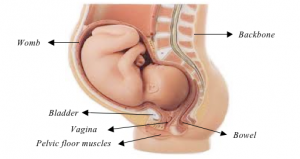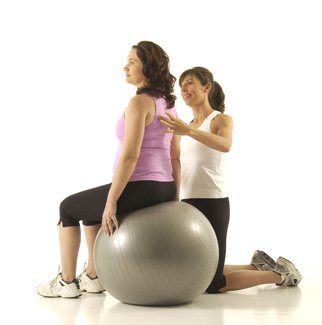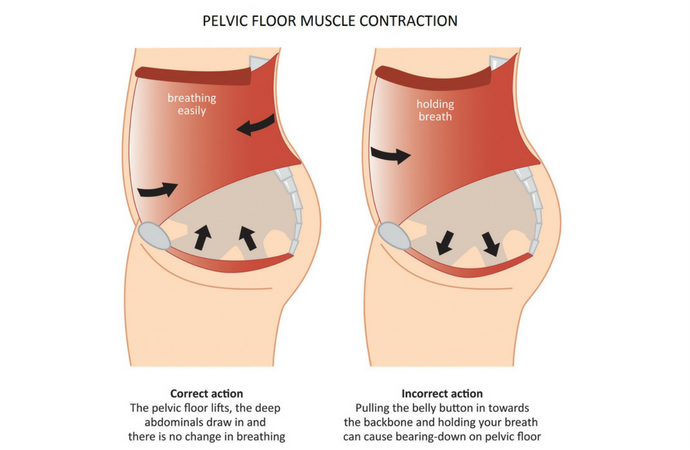One of the things you’ll hear about during pregnancy is the importance of pelvic floor exercises. Read on to find out a bit more about your pelvic muscles and why it’s a good thing to keep them strong.
What are your Pelvic Floor Muscles?
Your Pelvic floor muscles are at the bottom of your pelvis. They support your bladder, uterus and bowel. When you are pregnant the pelvic floor muscles help to support the baby, and help when you are giving birth. The muscles are strong and thick, and they stretch from your coccyx to your pubic bone and across your sitting bones. You can go the toilet because your pelvic muscles relax when they need to and then contract again to ensure you have bowel and bladder control. When you hold on, so as not to go, you are using your pelvic muscles. 
Your spine is supported by your pelvic muscles, together with the muscles in your stomach and back, which is why exercising these muscles helps to prevent back ache in pregnancy.
Why are Pelvic Floor Exercises So Important?
Pelvic floor exercises, or Kegels will keep your pelvic muscles strong. This means that you won’t suffer from stress incontinence or a prolapse. Pregnancy can weaken your pelvic floor muscles and many women suffer from stress incontinence after childbirth. You’ll find that if you cough, laugh or sometimes even when exercising, you’ll leak pee. Prolapses can occur after multiple births and can affect your uterus, bladder or bowel.
By keeping your pelvic floor muscles strong, you are reducing the risk of stress incontinence or prolapse. Strong muscles will also help you when you are giving birth because it can make delivery easier with less back pain. You will also recover from pregnancy a lot faster.
Strong pelvic floor muscles have another benefit, it can improve your sex life, because squeezing your pelvic floor during sex is said to heighten your enjoyment and your partner’s too.
What Makes Pelvic Floor Muscles Weak?
Child birth stretches the muscles, but they do strengthen again after exercise. Other causes include straining when you go the toilet. If you suffer from constipation, try adding more fibre to your diet by eating more whole grains and fresh fruit and vegetables. Drink plenty of water and do some exercise.
Heavy lifting and prolonged coughing can also weaken your pelvic muscles, so if you have a job that involves heavy lifting, make sure you add pelvic floor exercises to your fitness regime. Being overweight can also cause the pelvic floor to weaken, so try to maintain a normal weight.
How Do I Do Pelvic Floor Exercises?
Exercising your pelvic floor is one of the easiest exercises you’ll ever do. They can be done literally anywhere, on the bus, in the car, at work, in the park. Nobody can see you do these exercises and you won’t get sweaty or out of breath.
You don’t need to tighten your leg muscles, hold in your stomach or pull in your behind. You can do the exercises, standing, sitting or lying down.
Now, squeeze as if you are trying not to pee and feel the lift in the muscle, but don’t hold your breath while doing the exercise. (Don’t do this exercise when you are going to the toilet, it isn’t good for you). You should be able to feel the muscle contracting as you squeeze. Hold the squeeze for around ten seconds and then leave three or four seconds between each contraction. Do ten at first and then ten quick squeezes, build them up to around three or four sessions a day. It will take time to notice any difference, don’t give up, it might take at least three months before you notice any improvement, but it will be worth the wait.
Plus a final great reason for those pelvic floor exercises…
